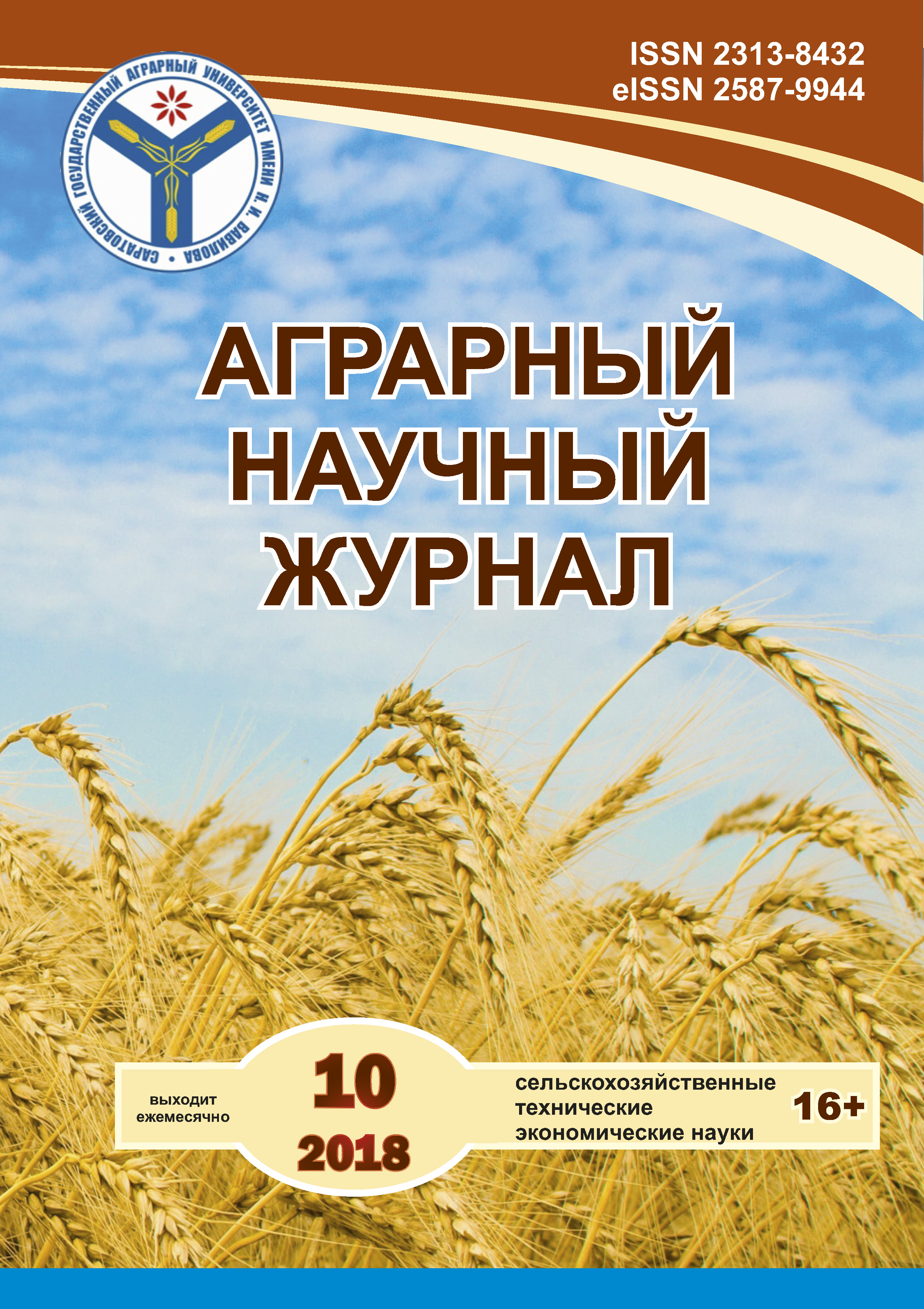A STUDY OF THE PHYTOTOXICITY OF HERBICIDES USED TO CONTROL MOUNTAIN BLUET
DOI:
https://doi.org/10.28983/asj.v0i10.605Keywords:
herbicides, Gorchak, Gorgon, mountain bluet, phytotoxicity, aftereffect, germination energy, germination, length of stem, primary root systemAbstract
The composition of preparations used to control mountain bluet includes picloram and clopyralid, which, along with high herbicidal activity, are able to exhibit phytotoxicity against dicotyledonous plants and representatives of the Poacea family. In addition, there is more and more data showing not only the species, but also the varietal sensitivity of cereals to these preparations. The data presented show that Gorchak and Gorgon herbicides practically do not have a negative impact on the growth and development of spring wheat varieties Favorit and Saratovskaya 55 in the early stages of their ontogenesis. The germination energy and seed germination were equal or exceeded the control variant by 2.0-4.0%. The development of the stem and the formation of the primary root system in both varieties have a positive trend. The increase ranged from 1.1 to 12.1% and from 4.1 to 16.6% in comparison with the control. Concerning winter wheat, there is no clear pattern in the action of the studied herbicides. The green mass of plants of all varieties of spring wheat and winter wheat equaled or slightly exceeded control.
Downloads
References
2. Казакевич Л.И., Галкина З.П. Карантинные сорные растения и способы их уничтожения. – Волгоград, 1985. – С. 6–13.
3. Лебедев В.Б., Стрижков Н.И. Последействие гербицидов в севообороте // Агро XXI. – 2007. – № 4–6. – С. 23–25.
4. Мальцев А.И. Распространение в России важнейших видов полевых сорных растений. – М., 1999. – 212 с.
5. Методические указания по регистрационным испытаниям фунгицидов в сельском хозяйстве. – СПб., 2013. – 280 с.
6. Петунова А.А., Маханькова Т.А. Сортовая устойчивость растений к гербицидам. – СПб., 2009. – 364 с.
7. Применение гербицида сангор (рекомендации) / Ю.Я. Спиридонов [и др.]. – М.: Агропромиздат, 1988. – С. 4–11.
8. Силаев А.И., Маханькова Т.А., Поляков С.С. Действие противогорчаковых гербицидов на критерии качества зерна яровой и озимой пшеницы // Аграрный научный журнал. – 2017. – № 12. – С. 52–54.
9. Сортовая устойчивость зерновых культур к новым гербицидам/ В.И. Долженко [и др.] // Агро XXI. – 2008. – № 4–6. – С. 23–25.
10. Спиридонов Ю.Я., Спиридонова И.Ю. Горчак против горчака ползучего // Аграрный сектор. – 2015. – № 4(26). – С. 56–62.
11. Acroptilon repens: информация о распространении. EPPO Global Datbase, 2018 // gd.eppo.int›taxon/CENRE.








